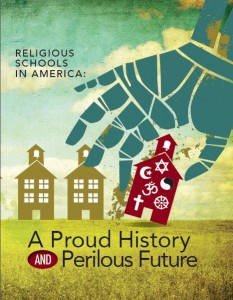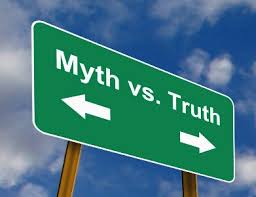From another place I take my name.
— Edmund Spenser
The movement for school choice is principally a work of three quite distinct ideological camps:
(1) Those who would limit parental choice to public schools, typically through open enrollment and charters. Democrats for Education Reform is a leading promoter of this sort of reform that is limited to the government sector.
(2) Those who would subsidize choice among all schools — private and public, religious or secular. Parents would be financially empowered, and participating schools would seek a degree of economic class variety in admissions. This is the oldest of these types, dating to 1978; these activists label their vision “Centrist." The American Center for School Choice was a signal example.
(3) Activists favoring parental empowerment for tuition at all schools but typically leaving participating schools completely in control of admissions and recruiting policy and free to charge add-on tuition. The Friedman Foundation for Educational Choice is an example of those favoring such a seller-controlled market. Many among them prefer the title “libertarian.”
The media have at times dubbed the Centrists the “voucher left”; doubtless, if such a figure of speech is allowed, they third group in turn could be the “voucher right.”
The left-right cartoon amuses, and this blog has occasionally featured it; but it also diverts us from the nature of the significant differences among the three camps favoring some form of choice. I conclude that — barring the case of circles — “centers” do tend to be left of right; but anyone seeking clarity will object to the confusion that “left” causes in the present case considering that Democrats for Education Reform is to the “left” of the American Center. The only valid question is left of what, how far, and in what respects. The Center, so appraised, is left of the Friedman as Bernie is left of Hillary and she of Cruz on the right; which makes her what – a leftist? Think about it. (more…)
Education’s parental choice is down to the heart of the matter in Florida. Will it remain a program at the margins? Or will the growing reality of empowering parents actually transform education over the coming years into a system that respond to the needs and desires of society and its families? Into a true public education system?

These scholarship students joined faith leaders in the Florida Capitol last week to support a bill that would strengthen and expand the program. (Photo by Silver Digital Media)
In such a structure, the traditional public schools exist as one delivery method among several – charter schools, private schools, homeschooling, virtual schools, and possibly others to be created. But they are no longer the “public education system” that must be preserved at all costs and to the detriment of the others. Unfortunately, some Democratic lawmakers must still be persuaded.
Look no further than last week’s debate in the House Finance & Taxation Subcommittee, where representatives voted 11-7 along party lines in favor of a bill to strengthen and expand Florida’s tax credit scholarship program. (The program is administered by Step Up For Students, which co-hosts this blog with the American Center for School Choice.)
This program will continue to save the state money even after its expansion. It has a multi-year record of academic improvement, documented by an independent analysis. Yet it was bombarded with arguments rooted in doubts and fears rather than rationality or concern for children. Can those of us who are Democrats look at a cost-saving program that is successfully serving tens of thousands of low-income families, with tens of thousands more asking for a chance to participate, and really say, “You are asking for too much too soon”?
One of the most often heard views is no further funding should go to tax credit scholarships until “public education is fully funded.” First, this unicorn chase is a beautiful, yet mythical fairy tale. Nothing is “fully funded,” not our police force, our electric grid, our sewer system, our public transportation system, or our national defense. This is an excuse, if accepted, for doing nothing except plowing money endlessly into the status quo. Second, it is akin to telling your younger child, “No more Christmas presents until your big brother’s wish list is completely fulfilled.” (more…)
Few people in the field of education bring the kind of credibility to a debate on faith-based schools that Andy Smarick brings. So his keynote speech Tuesday to the American Center for School Choice’s Commission on Faith-based Schools in New York was all the more riveting for his decision not to preach to the choir. His message – that to reverse the decline, faith-based educators need also to look in the mirror – amounted to a family intervention.
“Without putting too fine of a point on it,” Smarick said, “an H.G. Wells quote seems particularly fitting: ‘Adapt or perish, now as ever, is nature’s inexorable imperative.’ ”
Smarick criticized faith-based schools – and private schools in general – for not adapting to a new educational environment driven by regulatory accountability and performance measures, and for not being more transparent about their academic performance. He challenged a passage in the commission's report:
“The following paragraph from your report is particularly instructive: 'America is losing a valuable national asset — not because it has become obsolescent, not because the demand for it has disappeared, not because the need for it has been satisfied by other entities, but because we have a misguided public policy … '
“It is my humble contention that these policies are misguided as much because of our behavior as anyone else’s. I’m sad to say, most believe we currently don’t deserve better policies. Our elected officials are understandably making education decisions based on the conditions of 2013, and we’re acting like it’s 1963.”
The public and charter sectors are transparent in ways that better inform parents and satisfy the demands of those in government who pay the bills, Smarick told the audience. So private schools that want to constitute a viable third sector need to embrace the reality seen in most Western nations: (more…)
 The new, national Commission on Faith-based Schools holds its first leadership summit in New York City today, aiming to raise awareness about a fact too long overlooked: Faith-based schools in America’s inner cities are in trouble.
The new, national Commission on Faith-based Schools holds its first leadership summit in New York City today, aiming to raise awareness about a fact too long overlooked: Faith-based schools in America’s inner cities are in trouble.
To that end, the commission will release its first report to the nation. “Religious Schools in America: A Proud History and Perilous Future” is part myth dispeller, part history lesson, part call to action. It compiles rarely seen data and offers a tight summary of the research regarding outcomes. Its introduction distills what’s at stake:
Faith-based schools are an extension of individual and family religious freedoms in America, tied to an expression of their rights of conscience and rooted deeply in America’s history. These schools—and the rights that they help to protect—are currently under severe financial strains that threaten the existence of many of them. The United States is an aberration among democracies because it does not provide public support for its families to choose a faith-based school when they wish to do so.
U.S. faith-based schools, despite suffering a severe financial disadvantage when compared with public schools and with faith-based schools in other Western democracies, are serving hundreds of thousands of students of color, students from low-income families, students with special needs, and students whose first language is not English.
Finally, faith-based schools are producing above-average academic results with fewer resources, in both traditional academic subjects and also in the development of the virtues of character, respect for differences, and citizenship.
Also today, the commission will unveil a new website stocked with data about religious schools. Compiled by researcher Vicki E. Alger, “Assembling the Evidence” includes a stack of charts, maps with state-by-state breakdowns, and a library with more than 4,000 reports, surveys, and research studies.
Report here. Website here. As always, full disclosure: The commission was founded by the American Center for School Choice, which co-hosts this blog.
Bad public policy has exacerbated the crisis with faith-based schools in America’s inner-cities, and it’s likely to get worse unless religious leaders, parents and the schools themselves get better at raising awareness about the value of such schools and advocating for expanded school choice, two school choice leaders said Tuesday.
“Faith-based education is under attack on so many levels from the government and others with an anti-faith agenda,” said Robert Aguirre, who chairs the new, national Commission on Faith-based Schools. “It is easy to see the result and the implication of such a crisis. It is much harder to explain the lack of a national outcry.”
“If the organizations who operate faith-based schools don’t get to work to organize their parents/families,” Aguirre continued, “things will get much worse, much quicker, over the next 25 years than they have over the past 25!”
Aguirre’s comments came during a live, written chat on redefinED that also featured Peter Hanley, executive director of the American Center for School Choice. The center, which co-hosts the blog, formed the commission last year to raise awareness about the plight of faith-based schools and spur action towards their revival. The commission’s first leadership summit is set for next week in New York City.
Wrote Hanley during the chat: “The Commission was formed to challenge the complacency that closing religious schools, especially in urban areas where there is little educational choice and where these schools have served communities for years, is just a result of natural evolution rather than bad public policy. We want to create a national consensus that these schools are a national asset that millions of American families value and should be able to access as part of our educational system.”
Aguirre and Hanley also:
You can read the entirety of the chat through the transcript below.
The U.S. is home to 21,000 faith-based schools. They serve 4.3 million students. They’ve long been an integral part of the American mosaic. Yet today, many of them are under intense financial strain, particularly in urban areas where, for generations, they’ve admirably served low-income students. At a time when American public education could use help from every quarter, the plight of faith-based schools remains sadly overlooked.
To raise awareness and spur action, the American Center for School Choice (which co-hosts this blog) created the national Commission on Faith-based Schools. It’s holding its first school leadership summit Nov. 19. To tell us more about these efforts – and to answer your questions – two center leaders will join us for a chat next week: Peter Hanley, the center’s executive director; and Robert Aguirre, a member of the board of directors and the commission chair.
The chats are live, interactive and in writing. We describe them as a press conference with a typewriter, with the floor open to anyone who wants to ask a question.
To participate, come back to the blog on Tuesday, Nov. 12. We’ll start promptly at 11 a.m., so click in to the live chat program – which you’ll find here on the blog – a few minutes before then. In the meantime, if you have questions for Hanley or Guerra, you can pose them in advance (which, depending on turnout, may make it more likely that they’ll be able to answer it.) You can leave them in the comments section, email them to rmatus@sufs.org, tweet them to @redefinEDonline, and/or post them on our facebook page.
 We’ve heard the myths before. Parents can’t receive public support for their children to attend a faith-based school because that would violate constitutional restrictions. Faith-based schools are selective and homogenous. Faith-based schools shred the social fabric and civic unity. Despite overwhelming evidence to the contrary, the myths persist. And, in doing so, they continue to hamper efforts to bring faith-based schools fully into the panoply of choices from which all parent should be able to choose - and which compose public education in the 21st Century.
We’ve heard the myths before. Parents can’t receive public support for their children to attend a faith-based school because that would violate constitutional restrictions. Faith-based schools are selective and homogenous. Faith-based schools shred the social fabric and civic unity. Despite overwhelming evidence to the contrary, the myths persist. And, in doing so, they continue to hamper efforts to bring faith-based schools fully into the panoply of choices from which all parent should be able to choose - and which compose public education in the 21st Century.
In its first report to the nation, “Religious Schools in America: A Proud History and Perilous Future,” the Commission on Faith-based Schools lists 10 of these myths – along with the facts that dispel them. The commission is a product of the American Center for School Choice, which co-hosts this blog. Its aim: To cast a brighter spotlight on the value and plight of faith-based schools, which are declining in urban areas where they have long been part of the solution in educating low-income children. The commission is holding a leadership summit in New York City on Nov. 19, where the report will be released. We’ll bring you more information in future posts. In the meantime, we thought the 10 myths worth sharing on their own.
Myth: Providing public support to families to choose a faith-based school violates the Establishment Clause of the U.S. Constitution.
Fact: The U.S. Supreme Court has ruled that providing publicly supported scholarships directly to parents, either through tax credit scholarships or vouchers, is constitutional and 17 states now have such programs in operation.
Myth: Religion has never been a significant part of American education.
Fact: Religion was the foundation of education in America from Colonial days into the early 20th century, with states passing laws requiring Bible reading in public schools as late as 1930. Public schools based on religion are not constitutional, but many American families still want to access a faith-based school for their children’s education.
Myth: Few countries provide support for parents to choose a faith-based school as part of their public education systems.
Fact: Actually, in the Western Hemisphere, only Cuba and the United States do not routinely provide public support for parents to make that choice. Most democracies have incorporated faith-based schools among the choices that are open to parents when selecting a school for their children. (more…)

The critic should not imagine this escapist attitude to be the specialty of the occasional occult and exclusivist faith-based school. Most of us can find it in the mirror.
The American Center for School Choice is committed to the empowerment of all families to choose among schools public and private, secular and religious. As in all programs of government subsidy - food stamps are an example - there will be limits on the product that can be chosen; the school preferred by the parent must meet academic standards and respect civic values. Taxpayers will not subsidize the choice of any curriculum encouraging hatred or violence.
Until the 1950’s public schools could, and did, broadly profess a religious foundation for the good society; and both history and serious contemporary research report the powerful contribution of religious private schools to civic unity. Nevertheless, skeptics of parental school choice for lower-income classes are inclined to worry: are faith-based schools perhaps separatist in their influence simply by teaching - in some transcendental sense - the superiority of believers? The critics’ principal target is an asserted practice of some religious schools to claim a favored access to eternal salvation for their own adherents.
If this allegation is an issue, it is not one for the lawyer; so long as a school teaches children to respect the civil law and their fellow citizens here on earth there could be no concern of the state. It is unimaginable under either the free exercise or establishment clauses of the 1st Amendment (plus the 14th) that government - federal or state - could undertake to censor the content of teaching simply because it includes the idea that the means of eternal salvation are accessible only to some. The State’s domain is this life only, and our governments have so far properly refrained even from asking such an inappropriate question of any school.
The content of religious teaching could become relevant to government concern - and subject to regulation - only insofar as it bore upon matters temporal. Racial distinctions by employers suggest a rough parallel; the school cannot discredit the aptitude of non-believers for strictly earthly vocations or civic participation. It may not teach that Catholics tend to make unsatisfactory mathematicians, or that Jews can’t cook. It may not warn its children to avoid personal relationships with children of non-believers. But note that such a limitation upon temporal stigma is not a restraint unique to religious schools; it is a standard curb on the teaching of the purely secular institution, whether this be Andover or P.S. 97. There is really nothing peculiar here to the faith-based school.
Thus, though the opponent of school choice is correct to worry about schools teaching the temporal inferiority of any group, he is bound in sheer logic to broaden his concern to include educators public as well as private. Just which category of school, by design or choice, most plainly radiates the earthly inferiority of particular groups would be a delicate political issue for the secular critic himself. The obvious candidate for this odious role would be the white suburban public school. (more…)
Sonia Sotomayor, Supreme Court justice, might never have blossomed in the Bronx without the help of a faith-based school, a Catholic oasis called Blessed Sacrament. Sotomayor herself says so. Asked by Anderson Cooper if she would have become who she is without the school, Sotomayor said, “Doubtful.”
Sadly, Blessed Sacrament is closing this year, felled by the same social and economic forces – and education policies - that contributed to the shuttering of 1,300 Catholic schools in the past 20 years. There is tragedy and irony in its passing. You don’t have to be religious to feel it.
For most of this country’s history, faith-based schools have been a fundamental part of the American experience. But now, as the nation continues to wrestle with how best to get academic traction with poor and minority kids, its 21,000 religious schools continue to shrink, and continue to be mostly overlooked as a potential piece of the solution.
Here’s the tragic part. Eleven of 12 gold standard research studies find positive academic outcomes for students using vouchers to attend private schools, the vast majority of them religious schools. More recently, William Jeynes, a researcher at California State University, Long Beach, found via a meta-analysis of 90 studies that students in religious schools were on average seven months ahead of their peers in traditional public and charter schools. This was after controlling for race, gender, poverty and parental involvement.
Faith-based schools are a financial bargain, too – for all of us. Average tuition is thousands of dollars less than per-pupil funding for public schools, so collectively, taxpayers are saving tens of billions of dollars a year.
All this isn’t to say faith-based schools are the end-all, be-all. They range in quality just as charter and virtual and traditional public schools do. But in this era of customization, they offer more options, and in this time of desperation, more hands on deck. There is no good reason to bar them from the mix of educational alternatives that is helping parents and educators find the best fit for each and every child. (more…)
As the fight to restore the ability of families to choose the school that best meets their children’s needs proceeds across the country, the future of urban faith-based schools that have served communities for decades remains in serious doubt. Often these schools have been the only choice available to families in tough neighborhoods, but because of changing economics and demographics they have been closing at alarming rates for decades. U.S. Supreme Court Justice Sonia Sotomayor described them “as a road of opportunity for kids with no other alternative.”
Unless this downward trend is reversed, the battle for parental choice may eventually be won, only to find the actual choices available have been substantially and possibly irreversibly diminished. On June 6 in Austin, Texas the national Commission on Faith-based Schools of the American Center for School Choice will host its first conference, “Religious Schools in America: A Proud History and Perilous Future,” to bring together an ecumenical group of leaders interested in preserving faith-based schools, as well as policymakers and media.
At the conference, the commission will release a report on its view of the state of faith-based schools in the U.S., the important role they continue to have in American education, and how they can serve all families that wish to choose them in the future. It will unveil a new web site that will have state-by-state data on faith-based schools and the students they serve. And most important, the commission will lead attendees as they strategize and plan on how to build on recent promising progress in several states and the courts to create momentum for sustaining and growing these schools.
Conference sessions will be highly interactive and encourage dialogue among all attendees. They will discuss progress on tax credit scholarship and voucher programs, and in the courts, and what actions made that possible. The intent is to help attendees understand in more depth how these programs work to benefit schools, as well as how they can be enacted and expanded in their communities.
This is a unique opportunity to build support for these schools on a broad interfaith basis. (more…)